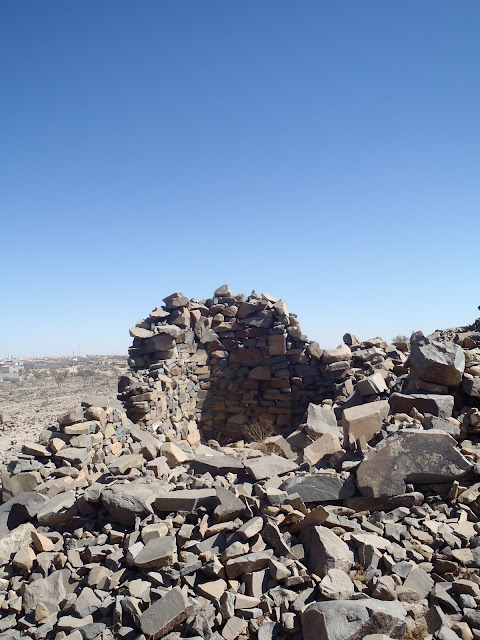After we had our day tour of Jeddah, the Mister and I met back up with Dawi and drove 200 miles outside the city to a mountain town called Taif (tah-eef). Taif is noted for its cooler weather and rose farms. Yes, I said rose farms. One of Taif's main exports is rose water that is used in many Middle Eastern recipes. Unfortunately, we didn't get to see any roses being grown because they are only cultivated in the summer during the rainy season. But we did get to see all kinds of really cool things. I've decided to share the gems of Taif in sections, photo album style. In the case of Taif, pictures really are worth a thousand words.
ew, I just gagged on my own cheesy cliche-ness.
Anyway.
 |
| The mountains were so pretty. I thought it was so funny to see naked mountains, I'm so used to seeing the Blue Ridge mountains covered in a blanket of green. |
 |
| The Mister napped as the desert scenery passed us by. He was so grateful to have two days without the stress of driving in Saudi Arabia. |
 |
| MONKEYS! Specifically, baboons. They were scary! The people just throw food at them, something we were strongly cautioned against when visiting Gibraltar. They even let their kids throw rocks at the monkeys, even the mothers with babies! So I was afraid to get out of the car to take pictures of them. |
 |
| The "Donkey Trail" is a restored path that shows how traders and invaders got to Taif before modern roads. |
 |
| Mountains so grand. |
 |
| Once in Taif, Dawi showed us an old watchtower, all that remained of a Turkish fort. Appropriately, the watchtower has been built into the wall surrounding a modern military compound. |
 |
| Me in front of the door of the Shobra Palace. The Shobra Palace served as the office building for King Faisal before he became King. It was built by an Ottoman who spent lots of time in Egypt. He brought the materials for the house from Egypt, and gave the house his newly adopted Egyptian family name. |
 |
| The inside of the Shobra Palace. |
 |
| The beautifully restored facade of the Shobra Palace. |
 |
Inside the Shobra Palace is a small museum. It had tombstones from early Islamic graveyards. Saudis don't use tombstones anymore (all bodies are buried in unmarked graves), so these are rare examples of tombstones from the area. I wonder what they did with the bodies that were (are?) in the graves where the tombs were taken....
More photos from Taif tomorrow.
Vicariously yours,
|


























































